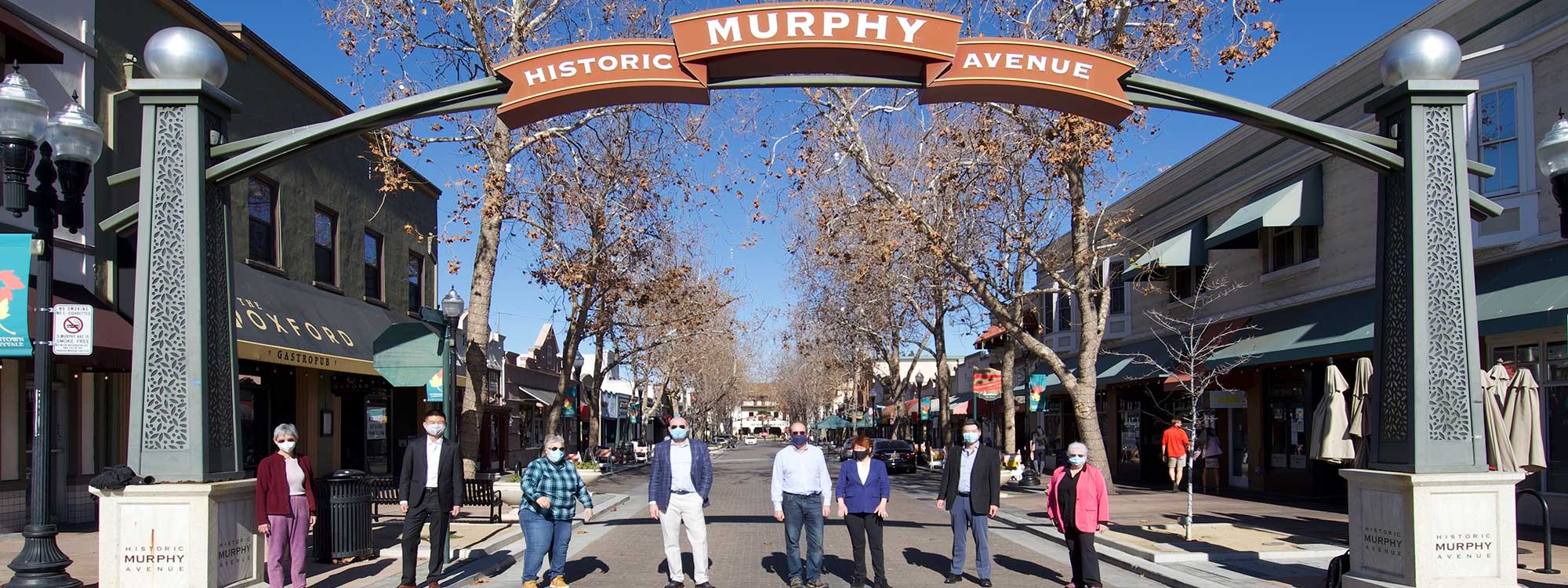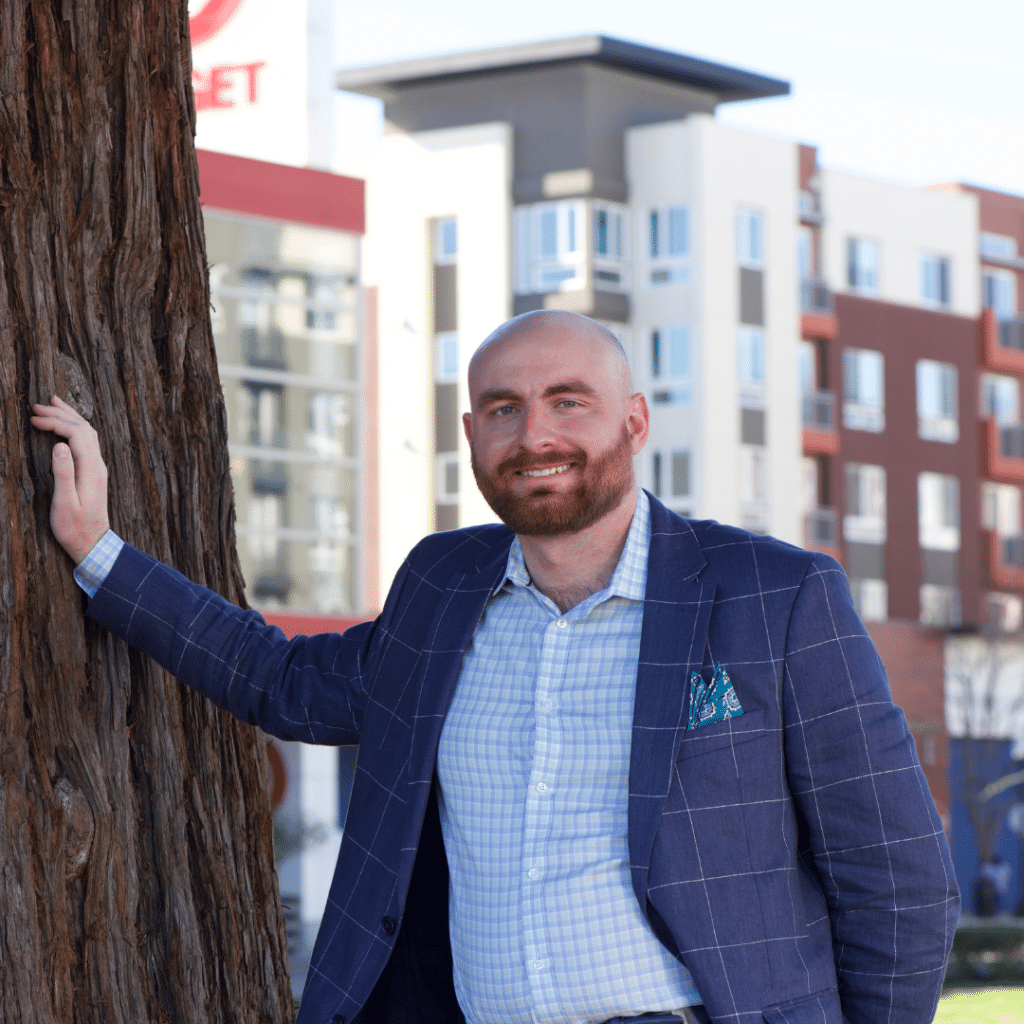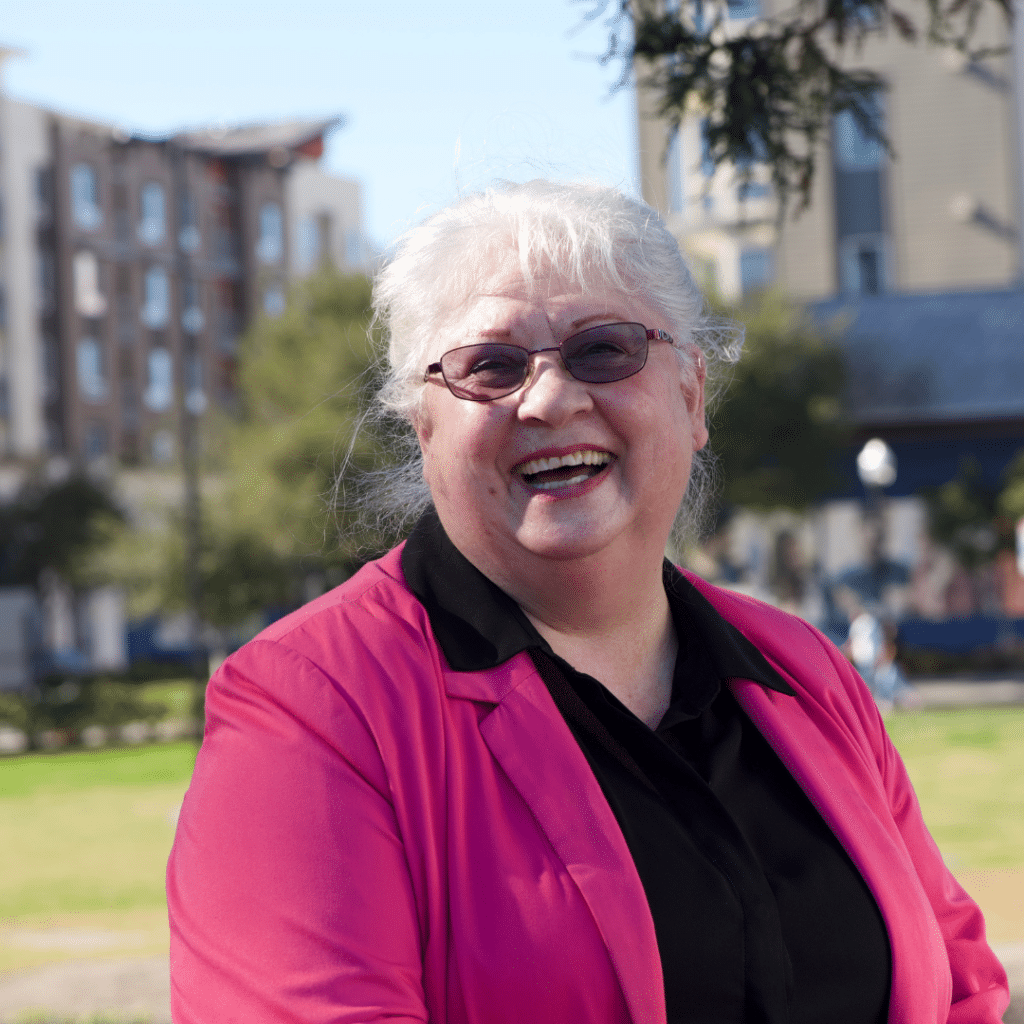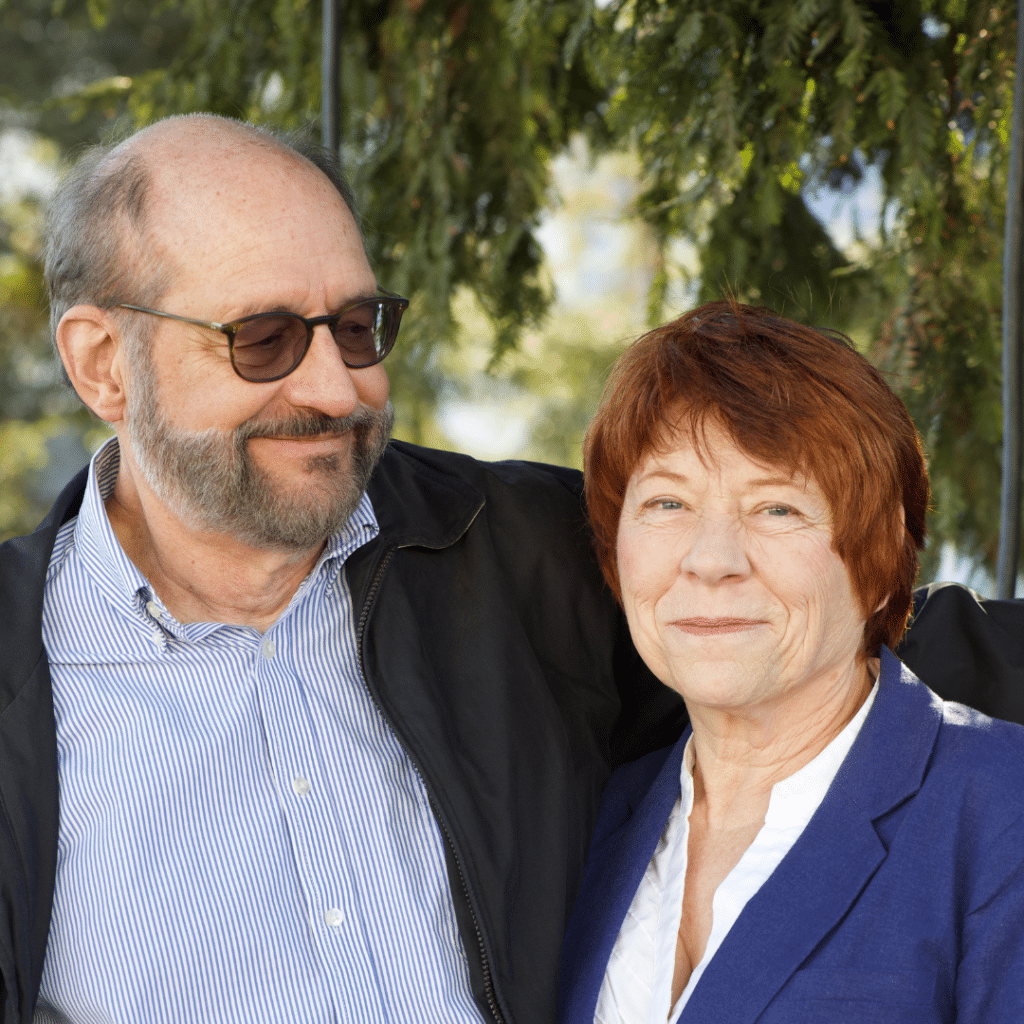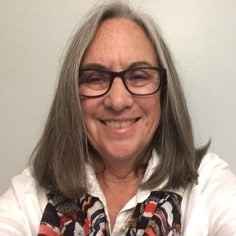How Livable Sunnyvale has become an influential voice for more affordable housing, transit and equitable communities.
It seems appropriate to paraphrase Bob Dylan when talking about Sunnyvale because the times are a-changing in this South Bay community. The seventh-largest city in the Bay Area has seen a significant cultural and political shift leaning towards more progressive ideas on affordable housing, transit, equity, and better quality of life in recent years. And, there’s one organization that has played a pivotal role in this shift.
Livable Sunnyvale spun-off from a focused housing committee from the local Democratic Club in 2014, led by organizer and activist Sue Serrone. It started as a grassroots community organization, bringing together local and regional organizations, including Greenbelt Alliance. While it still maintains that tight-knit sense of community, the volunteer coalition of activists and organizations has gained credibility and influence to generate more impact and change in the landscape of the city.
Over the years, Livable Sunnyvale has matured and grown, recently electing a new chair, and becoming a respected and influential voice in the region by advocating around pivotal developments such as El Camino Real (a 43-mile roadway that extends from San Jose to Daly City), and the Moffett Park Specific Plan (a 1,156-acre site that will be redeveloped into an ecological innovation district). “Livable Sunnyvale has shifted the conversation around zoning and land use in the city, to the point where most housing projects that go up for a vote at the City Council get fairly overwhelming support in public comment these days”, said Richard Mehlinger, the current chair of the organization.
We sat down with four members of Livable Sunnyvale to talk about the evolution of the organization, the impact of their advocacy, the changes it has brought about, and things they are excited to accomplish in 2021.
A Place Where You Want to Live
In the last 7 years, Sunnyvale has seen a transformation on how it perceives growth, development, and quality of life. As Sue Serrone, founder and chair emerita of Livable Sunnyvale, recalls “even though a lot of people thought that Sunnyvale was a wonderful, progressive place, there was a big resistance to change”. For some time, the city’s policy reflected the overall perception that it should remain as a suburban, low-density place, and the need for building more housing could go to neighboring communities. “But we’re in a time when— as a responsible individual or institution—you have to accept that we have to change, and it has to be pretty quick”, expressed Sue.
The response, then, was to start “hammering out” affordable housing issues to the City Council. The list of demands for housing has evolved and now spans a number of requests from the community, such as revision of zoning codes rooted in racism, encouraging active transportation, livable wages, access to open spaces, and better air quality. The cultural and political shift is moving towards one that is more focused on issues of equity and sustainability.
“Sue [and Livable Sunnyvale] has done an amazing job of taking it from one segment of affordable housing in the Democratic Club to expanding it out to all the different areas that make our community a place where you want to live and you’d want to go to if you didn’t live in it”, said Agnes Veith, a long time Bay Area resident who joined the group as a member in 2020.
“To me, being part of Livable Sunnyvale is about building a sustainable future for our city where we are not completely dependent on cars, where the people who work here can afford to live here, where the kids who grow up here aren’t forced to move out, where older residents and retirees can age in and find housing that is appropriate to their needs.”
Richard Mehlinger
This stance attracted engaged residents who wanted to be part of the change they desired for the place they call home. “To me, being part of Livable Sunnyvale is about building a sustainable future for our city where we are not completely dependent on cars, where the people who work here can afford to live here, where the kids who grow up here aren’t forced to move out, where older residents and retirees can age in and find housing that is appropriate to their needs,” expressed Livable Sunnyvale’s current chair, Richard Mehlinger, who joined the group in 2017.
“There were times in my life when I wasn’t sure if I would remain housed or if I would have enough food on my table”, said Agnes. “What I like about this organization is that it makes me feel that I’m contributing to the community and, in a small way, trying to help people so they don’t have to go through what I did,” she concluded.
The genuine interest and active engagement in the city, and the willingness to dedicate time has gained the organization credibility in the community and decision making spaces, and a special civic engagement that is not matched by other places around the region.
Cultural and Political Shift to Sustainable Growth
To Richard, a good pulse for the city’s perceived changes are the recent election results for mayor and district leadership. “I think the biggest and best indicator we have of the mood of the city is with Council and local election results.” The candidates who ran on “anti-growth” platforms lost decisively to those who campaigned on pro-housing platforms.
“From my perspective, the overall change in Sunnyvale’s been one of awareness, and because of that, there’s been a resultant culture shift—not huge, but measurable. And that’s been reflected in the people we’ve elected to Council and other elected positions,” said Sue as she looks back at the progress and changes Sunnyvale has gone through since the organization started.
“We are influencing the plans of developers early on, advocating before councils, not just Sunnyvale but regional councils and planning commissions too, educating members about the public issues related to housing, equity, sustainable living, and transit.”
Tara Martin-Milius
Tara Martin-Milius, who is the Vice-Chair of the organization and former council member from 2012-2016, recalls that in her tenure with the City, there weren’t positive voices for development. “The rhetoric wasn’t good on my Council, I didn’t have that voice of progressive movements or sustainable housing, so it was a harder push to get inclusionary housing”, she said, mentioning a time when she was the only voice on Council in favor of bus rapid transit, for example. “It’s been a lovely change in our public process to be able to hear instead of just small negative voices but also to hear the counterbalance and so much better informed and positive advocacy in a public discussion.”
The impact of Livable Sunnyvale’s work and advocacy can be seen on the ground. According to members of the group, their approach for positive, informed advocacy, as well as educational sessions for the public, has gained them credibility and influence in decisions on major projects in the region. Notably, the City Council added increased density near the Lawrence Station area, they approved the downtown Sunnyvale Specific Plan, they added increased housing density on El Camino Real. “We’ve helped to push the envelope in terms of the amount of housing that gets zoned for and built”, explained Richard.
“We are influencing the plans of developers early on, advocating before councils, not just Sunnyvale but regional councils and planning commissions too, educating members about the public issues related to housing, equity, sustainable living, and transit. And, its impact is kind of bending the curve toward inclusionary and equitable transit, housing, and sustainable living. It’s come a long way,” said Tara.
Community Building Community
For Sue, to be a part of this coalition was a lifesaving moment. She found the direction of the Federal Government around the 2016 election, coupled with high housing costs and the stark reality of increasing rates of people living on the streets and kids without guarantee of a meal, depressing, motivating her to look for ways to get involved. “My solution to my own situation was to get active to do stuff. And that really empowered me, out of necessity in some personal ways. I had so much anger and angst, I needed to get in there and fight and do what I could.”
“My solution to my own situation was to get active to do stuff. And that really empowered me, out of necessity in some personal ways. I had so much anger and angst, I needed to get in there and fight and do what I could.”
Sue Serrone
After experiencing politics at the state level, she concluded that Sunnyvale was about the right size to “get visibility and have a good chance at having an impact”.
What started as informal gatherings and meetings at Sue and her husband Michael Serrone’s home, became a coalition of engaged citizens and organizations. Greenbelt Alliance was one of the first supporters of Livable Sunnyvale, with their list of partners also including the Democratic Club (where it all started), the Silicon Valley Bicycle Coalition, Silicon Valley @ Home, TransForm, Friends of Caltrain, and more.
For Vice-Chair Tara, it takes a community to create a community, and the passionate members of Livable Sunnyvale and partners that made the organization come a long way. “Greenbelt has really had a very strong influence in that, because from the beginning they provided administrative support, suggestions, and connections so that the messiness of volunteer groups and different activities, and viewpoints are all coming together in a more cohesive focused whole.”
A large part of their success comes from their approach to foster and strengthen the local community. According to Tara, this sense of educating and creating a safe space for different points of view has been key. “I’m particularly gratified to have the group moving forward on having subject matter experts”, she said, referring to recent online panels and discussions about racial and social issues that are connected to their work. They hosted conversations with Dr. Jessica Trounstine on her book Segregation by Design and Professor Michael Lens from UCLA Luskin School of Public Affairs about housing affordability and segregation. The next one will be with Don Weden, a retired Principal Planner at the County of Santa Clara, on Urbanism After the Pandemic, What futures should we be preparing for? “They educate, inspire, and motivate us to see a bigger picture and to understand more clearly what the underlying causes of our current issues are, so this all gives us much more ability to be more informed and effective in our advocacy,” celebrated Tara.
New Challenges Ahead
Livable Sunnyvale has come a long way since its genesis, and it’s continuing to promote local, positive, and informed advocacy.
For this year, there’s excitement to push for a campaign to legalize multi-family zoning city-wide to address segregation and affordability and encourage more diversity. This is already a reality in parts of the city, such as downtown, where there are numerous scattered duplexes and fourplexes. “We’re talking about legalizing forms of housing that already exist in many of our neighborhoods, including some of the wealthiest and most prestigious ones in the city,” explained Richard. According to him, engaging the Livable Sunnyvale members every step of the way will be key in their efforts to push this initiative through.
Not only that, but there are more ambitious goals as they continue to engage with key sites in the city that are promising to change the landscape of the region and bring in more homes, such as Moffett Park and El Camino Real. For Sue Serrone, this is going to have a huge impact in Sunnyvale. “To be on the bleeding edge of a lot of kinds of thinking, in terms of planning, materials, and of the whole concept.”
“I think it’s young people and people that have gone through things that we need to pull in to help us understand what we can do and when we do better.”
Agnes Veith
However, to continue to win bigger fights that will change the status quo, Livable Sunnyvale must attract more young and diverse people. The group currently has many volunteers who have the time and resources to dedicate to the organization but is still looking to expand and diversify their membership. “I think it’s young people and people that have gone through things that we need to pull in to help us understand what we can do and when we do better,” pondered Agnes.
“There’s so much Sunnyvale doesn’t have represented that it should. Make it more of a diverse and welcoming city”, completed Sue.
It’s an exciting moment to be a part of the change in Sunnyvale, because the “times they are a-changing.” Learn more about Livable Sunnyvale here.
Written in collaboration with Advocacy Manager Justin Wang.
Photo: Jasmine Canty, Livable Sunnyvale

